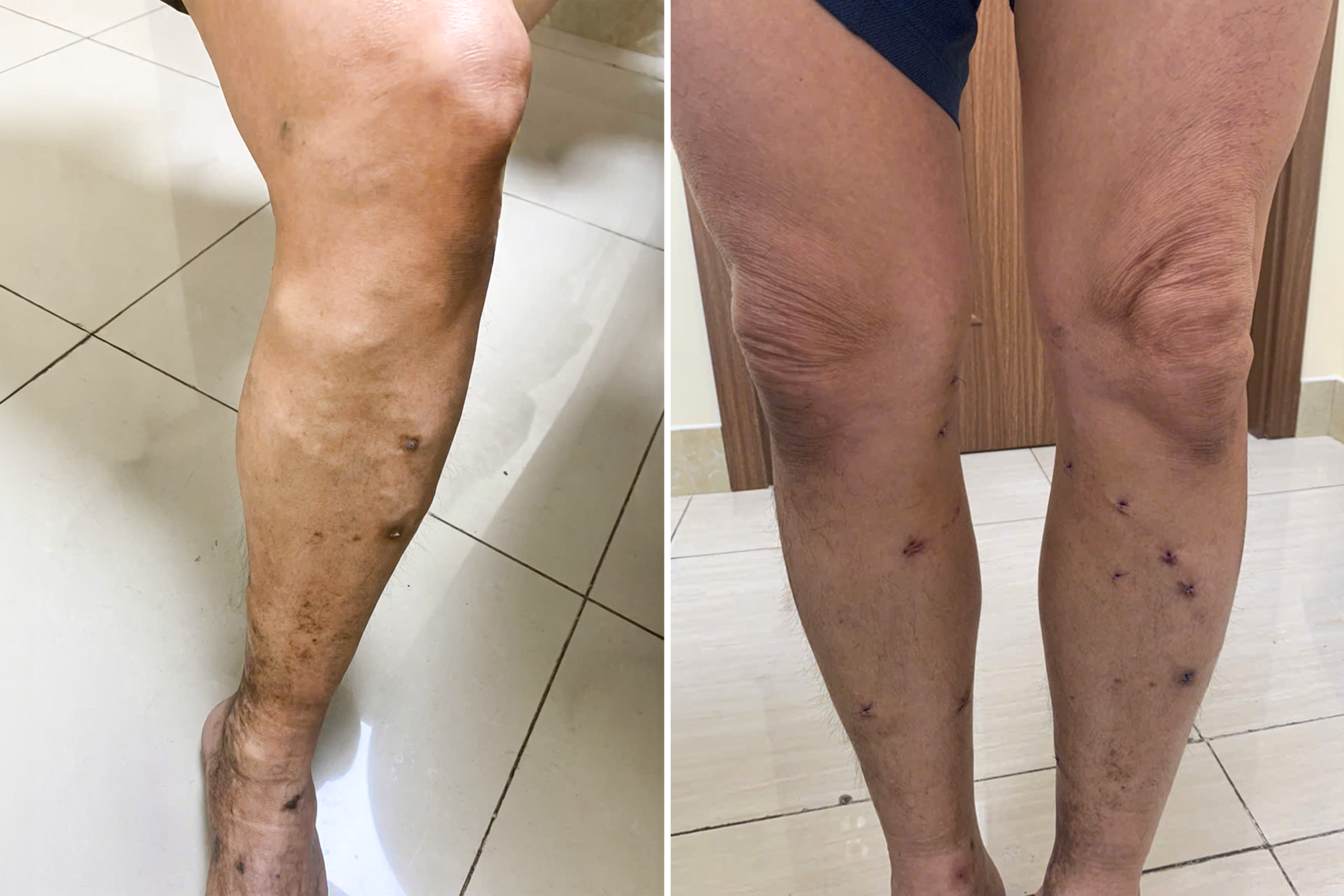Varicose veins in the lower extremities occur when blood pools in the leg veins due to weakened vein valves. These weakened valves hinder the normal return of blood to the heart, increasing pressure and causing the leg veins to become enlarged and twisted.
Dr. Pham Ngoc Minh Thuy, a cardiovascular specialist at Tam Anh General Clinic, District 7, said Tam had stage C4 varicose veins in both lower extremities (there are six stages, from C1 to C6). The superficial veins were prominent on the skin's surface, accompanied by spider veins, causing pain, swelling in both legs, skin darkening, and frequent cramps despite regular medication.
According to Dr. Thuy, medical treatment primarily focuses on symptom relief and slowing disease progression in the early stages. In Tam's case, the disease had progressed to stage C4, with severely damaged veins and completely weakened valves, causing chronic venous insufficiency. While medication and medical stockings could partially alleviate symptoms, they couldn't address the root cause: vein damage. Without intervention, the condition could worsen, leading to complications such as leg ulcers and dangerous venous inflammation.
Tam also had hypertension and blood lipid disorders, risk factors that could exacerbate the condition. The doctor prescribed pain relievers, anti-inflammatory medication, vein support, and antihypertensive drugs for optimal medical treatment before intervention.
Dr. Nguyen Hong Vinh, from the Cardiovascular Center at Tam Anh General Hospital in Ho Chi Minh City, performed a vein glue injection combined with Muller surgery to remove the dilated superficial vein clusters. Guided by ultrasound, the doctor injected an appropriate amount of biological glue along the length of the damaged vein through a small catheter. The glue seals the vein walls, blocking backward blood flow and redirecting circulation through other healthy veins in the leg. This method preserves surrounding tissues, muscles, and nerves, facilitating quick recovery. A few hours after the procedure, Tam could walk normally, his symptoms reduced, and he was discharged with a follow-up appointment.
 |
Tam's leg with prominent spider veins and darkened skin (left) and after varicose vein treatment (right). Photo: *Tam Anh General Clinic, District 7* |
Dr. Vinh explained that biological glue injection is an advanced, minimally invasive treatment for varicose veins, widely used due to its minimal pain, local anesthesia requirement (only at the injection site), no heat generation, and no nerve damage. The procedure takes about 20-30 minutes, requires no hospitalization, allows for quick recovery, and eliminates the need for long-term medical stockings.
Dr. Thuy advises individuals experiencing symptoms such as heavy legs, leg fatigue, swelling, visible blue veins under the skin, and evening pain to seek specialist consultation for appropriate treatment. High-risk groups include those who stand or sit for extended periods (teachers, office workers, salespeople, tailors, drivers, flight attendants), pregnant or postpartum women, older adults, and those who are overweight or obese.
To prevent the condition, individuals should avoid maintaining one position for too long, perform varicose vein exercises, elevate their legs while sitting or resting, practice active breathing, maintain a high-fiber diet (vegetables, fruits, beans, nuts), exercise regularly, and manage their weight.
Ngoc Chau
*The patient's name has been changed.
| Readers can submit questions about cardiovascular diseases here for doctors to answer. |












